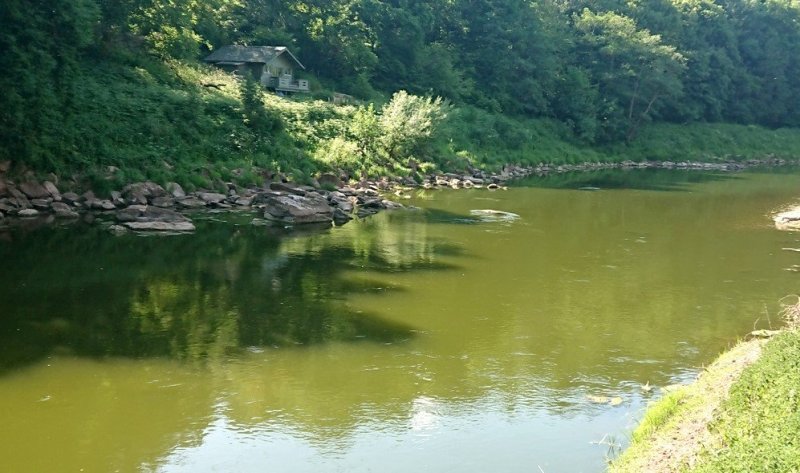
Poultry farming did not cause the River Wye to turn green, but sunny weather and low river levels did, Natural Resources Wales has said.
Earlier this month, farming leaders criticised claims made by environmentalists that poultry farms caused the Welsh river to turn green.
The Usk and Wye Foundation suggested that phosphate - coming from poultry farms close to the river's tributaries - had caused a 'severe algal bloom'.
The charity said as a consequence, this had affected the amount of oxygen in the water which could potentially harm wildlife.
"Since 2008 the catchment of one of the river’s tributaries in Powys now hosts an extra ten million chickens.
"This has produced massive amounts of highly reactive phosphates from their manures,” said the report.
But Natural Resources Wales (NRW) has hit back at the claims. It said the algal blooms came at a time when river levels had been close to the lowest recorded coupled with the sunniest May on record.
These factors combined and created warm water temperatures, explained Ann Weedy, Mid Wales operations manager for NRW.
“Long term phosphate levels in the Wye catchment have been declining which is good for the health of the river," she said.
"This decline in phosphate levels is due to many factors such as the Dwr Cymru Welsh Water investment in the Llandrindod Wells Sewage Works."
Ms Weedy said that as part of NRW's pollution reduction activity, they work with farmers to minimise nutrient run-off into rivers.
"We regulate any poultry units which have over 40,000 birds and issue permits which contain conditions to protect the environment," she added.
"Large poultry units are required to dispose of their manure in accordance with a manure management plan."
Powys County Council has also refuted the claims made by Usk and Wye Foundation. The council said it was 'fully aware' of its statutory duty to conserve and enhance biodiversity.
“Where planning applications, including those for intensive livestock units, have the potential to impact on the River Wye Special Areas of Conservation, they are assessed, under the habitats regulations, to evaluate their acceptability,” it said.
